Introduction
In the rapidly evolving landscape of technology, organizations are increasingly recognizing the importance of strategic alignment between their technological investments and overarching business objectives. As companies navigate the complexities of digital transformation, understanding their unique needs and establishing a clear vision becomes paramount.
With a significant number of businesses adopting advanced technologies such as generative AI, the challenge lies not only in implementation but also in ensuring that the right expertise is sought to guide these initiatives.
This article delves into the critical steps organizations must undertake to effectively evaluate IT consultancies, assess their methodologies, and foster successful collaborations that drive innovation and enhance operational efficiency.
Through a comprehensive exploration of these elements, businesses can position themselves to thrive in an increasingly competitive digital environment.
Identifying Your Business Needs and Objectives
To effectively align your technology investments with your organization's strategic goals, initiate a comprehensive internal assessment of your current technology landscape. Begin by asking critical questions:
- What challenges are we currently facing?
- What objectives do we aim to achieve through technology?
In 2023, data indicates that 65% of organizations report utilizing generative AI in at least one function, illustrating the increasing significance of technology in driving business outcomes.
However, a concerning 55% of employers recognize a lack of essential skills in digital transformation as a major barrier to innovation, according to PwC. Incorporating insights from key stakeholders across various departments is crucial, as diverse perspectives can uncover needs that may not be immediately apparent. Documenting these insights and objectives clearly will not only facilitate informed discussions with potential advisory partners but also ensure a shared understanding of your organization’s vision.
The recent case study titled 'AI Readiness in Companies' highlights disparities in AI adoption and readiness levels among various sectors, underscoring the importance of assessing your organization's current capabilities. As you navigate these assessments, consider recent trends indicating that 58% of HR leaders leveraging AI report enhanced productivity, which emphasizes the need for a strategic approach to technology planning. Moreover, adopting long-term views on talent development and business reimagining can lead to competitive advantages, making this foundational step pivotal in setting the stage for successful technology investments in 2024 and beyond.
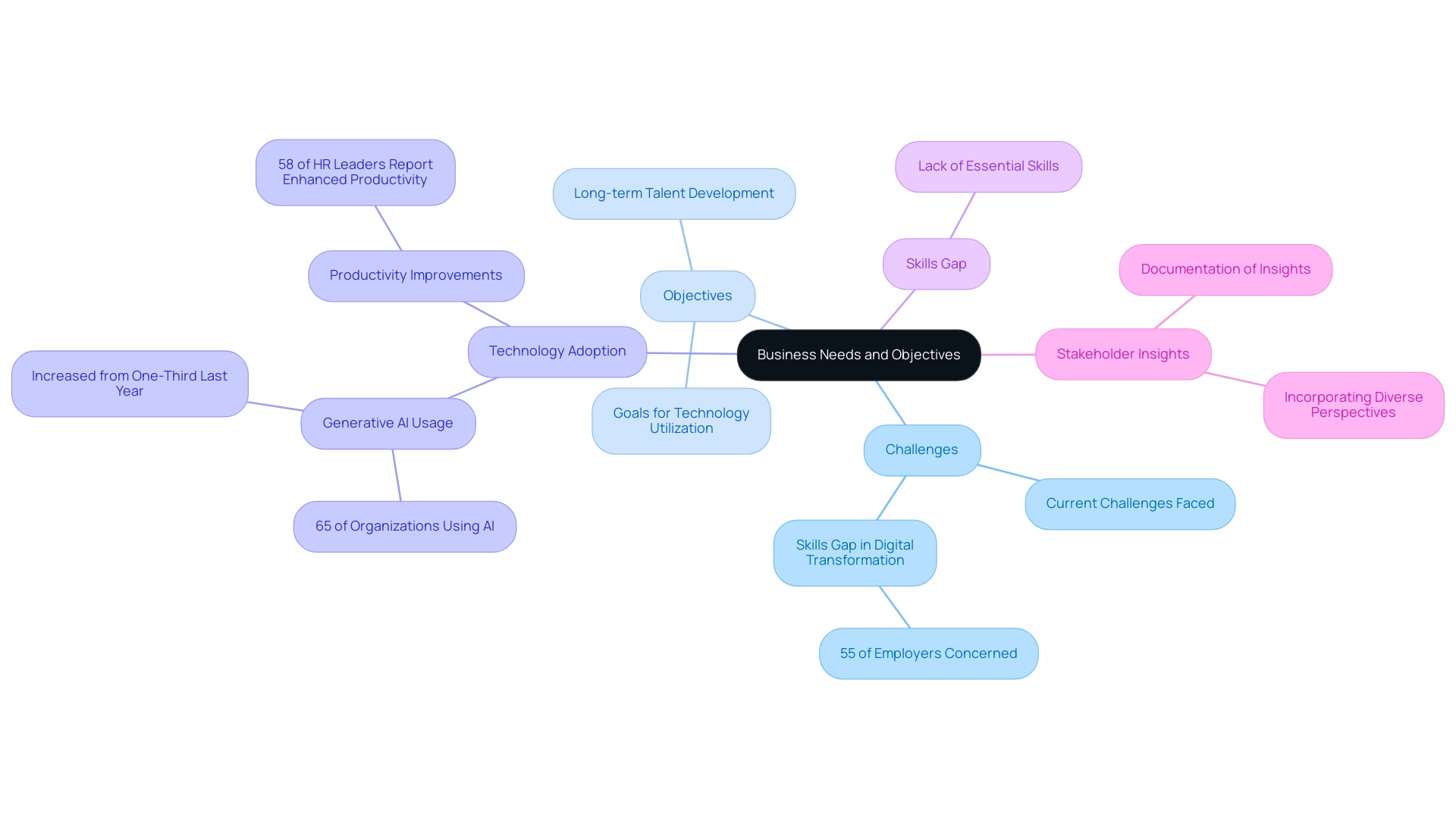
Evaluating Expertise and Track Record of IT Consultancies
To effectively assess potential firms in the London IT consultancy sector, it is essential to conduct comprehensive research. Begin by examining their websites, case studies, and any available white papers. Focus on details regarding their previous projects, especially those relevant to your specific industry and technological requirements.
Given that the IT consulting market, particularly in London IT consultancy, is predicted to expand to a staggering $114.01 billion by 2024 and is projected to reach $183.99 billion by 2033, with a compound annual growth rate (CAGR) of 12.7%, selecting the right partner is more critical than ever. This ongoing growth highlights the necessity for businesses to remain competitive in a digital world. Furthermore, think about contacting previous customers to collect feedback about their experiences, as testimonials can offer invaluable insights into the consultancy’s effectiveness.
For instance, one customer remarked,
"I was really impressed with the way STS Consulting Group handled everything. From the first conversation to everything in between, they were very helpful and knowledgeable."
Another customer noted,
"Using STS Consulting Group helped me save weeks of work."
Their delightful level of quality and service is consistent and one of a kind.
"I can't recommend STS Consulting Group enough."
These testimonials not only represent customer satisfaction but also emphasize the firm's reliability and ability to provide tangible results in their London IT consultancy services.
The COVID-19 pandemic has accelerated the adoption of digital technologies, as illustrated in the case study titled 'Impact of COVID-19 on Digital Adoption,' which shows how businesses are adapting to remote working and changing market conditions. By prioritizing these evaluations and considering customer feedback, CTOs can make informed decisions that align with their organization's digital transformation goals.
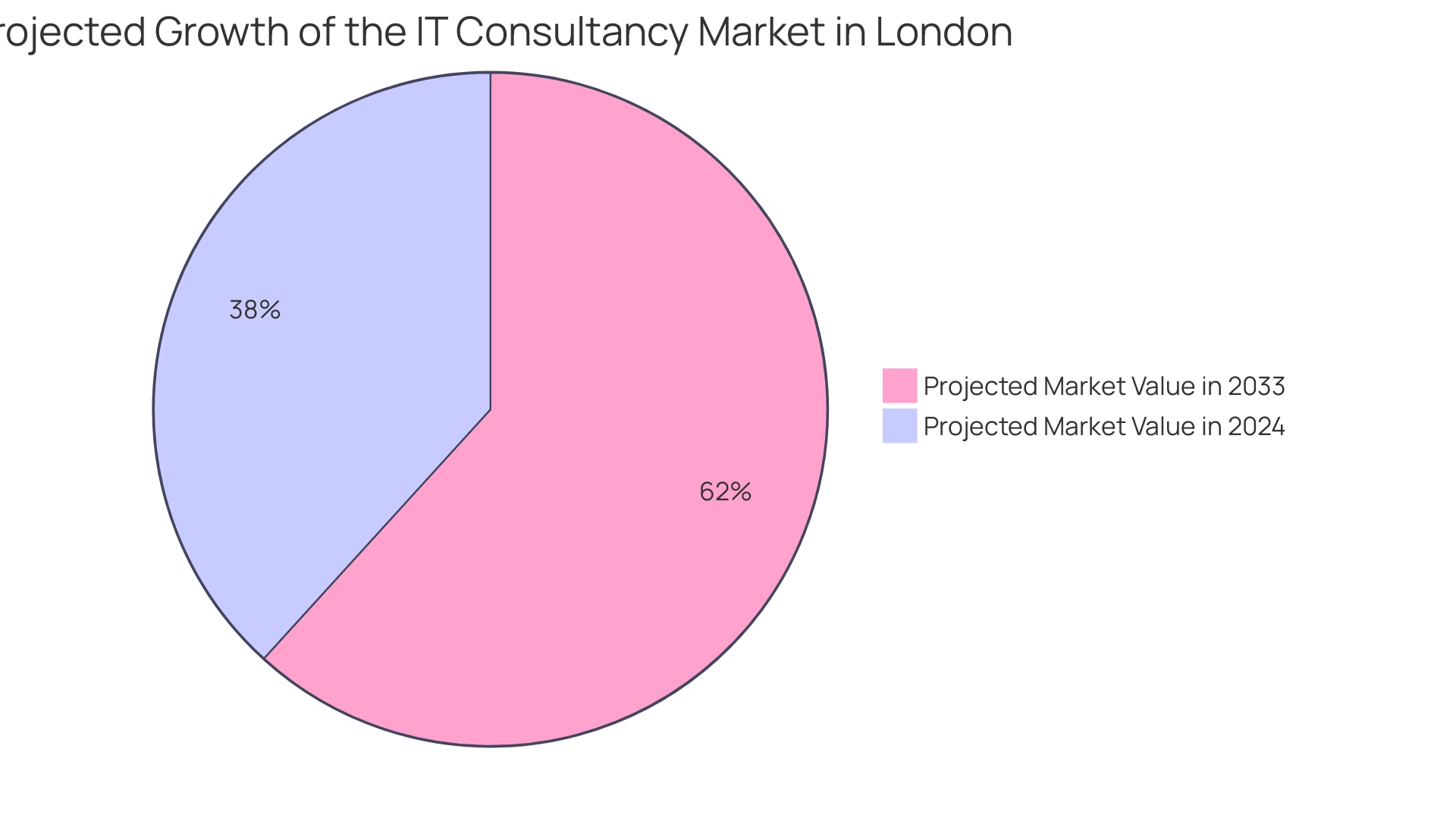
Understanding Consultancy Approaches and Methodologies
When interacting with potential IT firms, it is essential to explore their problem-solving methods and management strategies. Initiate discussions about the specific frameworks they employ, particularly focusing on methodologies like Agile and Waterfall. Understanding how these consultancies tailor their methodologies to meet diverse client requirements is crucial.
The management landscape is evolving rapidly, with a projected workforce growth of 33% across 11 countries by 2027, and organizations will need to adapt accordingly. Notably, recent trends indicate that over 53% of program managers prefer the Scaled Agile Framework (Safe), while more than 28% opt for Scrum@Scale. This preference emphasizes the significance of agility in management, particularly as Pumps with under 5 years of experience earn an average of $112,000 annually, showcasing the financial consequences of effective management and consultancy.
Furthermore, the case study titled 'Growing Demand for Workers' illustrates the potential talent shortages, with the number of task-oriented employees expected to reach 102 million by 2030, indicating a pressing need for organizations to prepare for the retirement of experienced personnel. As emphasized by industry experts,
If you manage projects in this space, embrace the technology, learn to leverage automation and workflows, and keep reaching for those bigger projects!
By thoroughly understanding an advisor's approach, you can evaluate their capability to effectively address your challenges and promote a productive collaboration with your team.
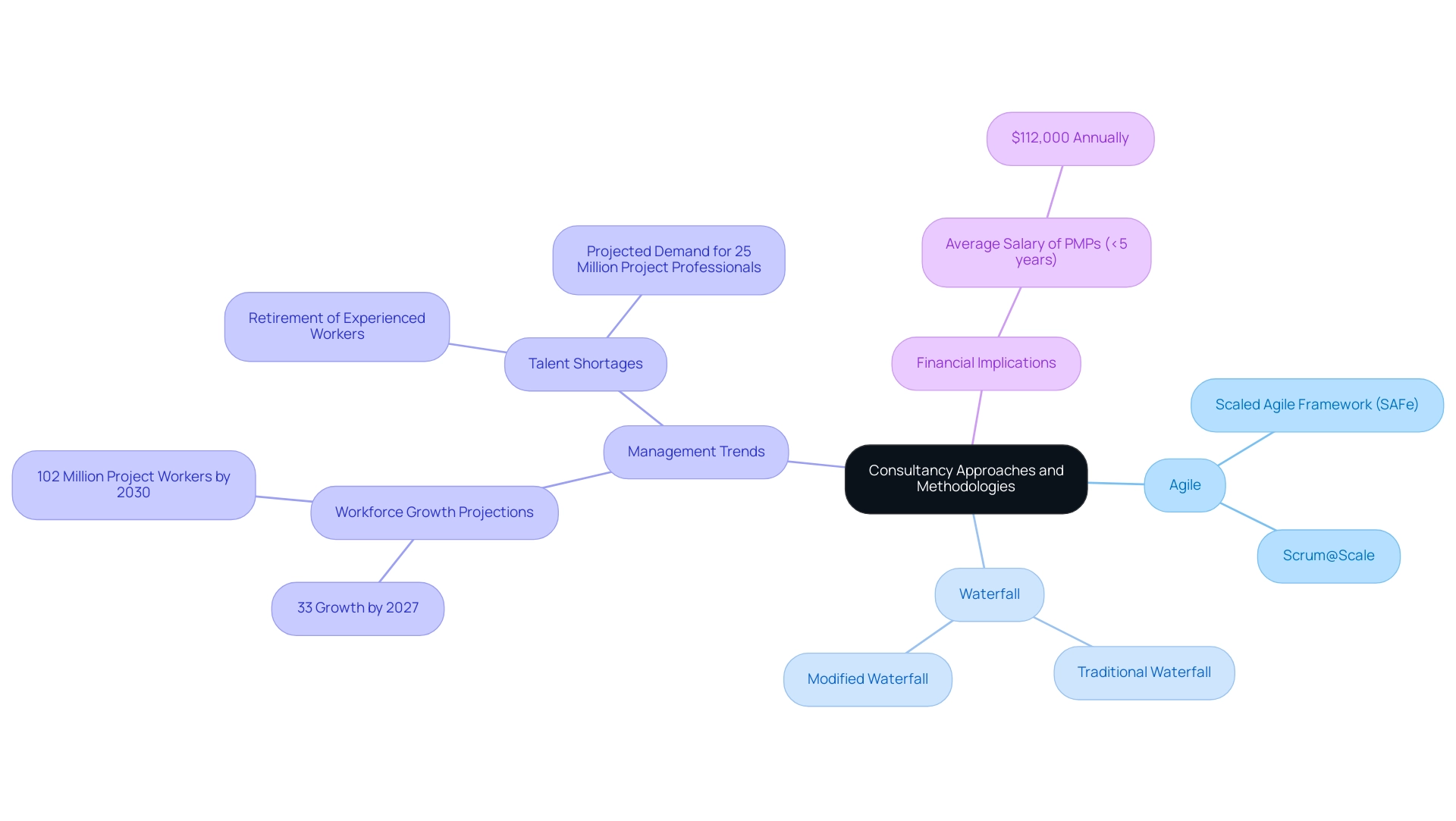
Assessing Client Testimonials and Case Studies
To effectively evaluate an IT advisory service, start by examining customer testimonials available on their website, as these provide invaluable insights into the professionalism and effectiveness of the service. For instance, customers have expressed high satisfaction with STS Consulting Group, stating, 'I was really impressed with the way STS Consulting Group handled everything.' From the first conversation to everything in between, they were very helpful and knowledgeable.
This emphasizes the consultancy's dedication to customer engagement. Furthermore, one customer remarked, 'STS Consulting Group was the missing piece to my puzzle,' illustrating how they successfully addressed specific challenges. If further clarity is needed, don’t hesitate to request additional references.
Focus on specific outcomes highlighted in case studies, such as enhancements in operational efficiency and the successful implementation of technology solutions. Given that 92% of customers would abandon a company after just two or three negative interactions, effective follow-up is paramount in shaping positive customer experiences; poor follow-up can significantly contribute to negative perceptions and should be a key consideration in your evaluation process. Furthermore, over 85% of customers express a preference for proactive communication, emphasizing the necessity of understanding customer needs before they reach out.
A pertinent example is the case study on conversation intelligence solutions, where 82% of marketers believe that insights from inbound calls can reveal costly blind spots. This highlights how data-driven insights can enhance customer experiences, increase retention, and drive revenue growth. Qualitative information from testimonials, including those from pleased customers who considered STS Consulting Group to be the 'missing piece to their puzzle,' offer valuable insights into how effectively a firm meets expectations and fulfills its commitments.
As McKinsey & Company notes, companies that grow faster derive 40% more of their revenue from personalized services compared to their slower-growing competitors. Therefore, examining the outcomes presented in client testimonials and case studies is not merely a formality; it is a strategic approach to ensuring that the firm can deliver tangible results.
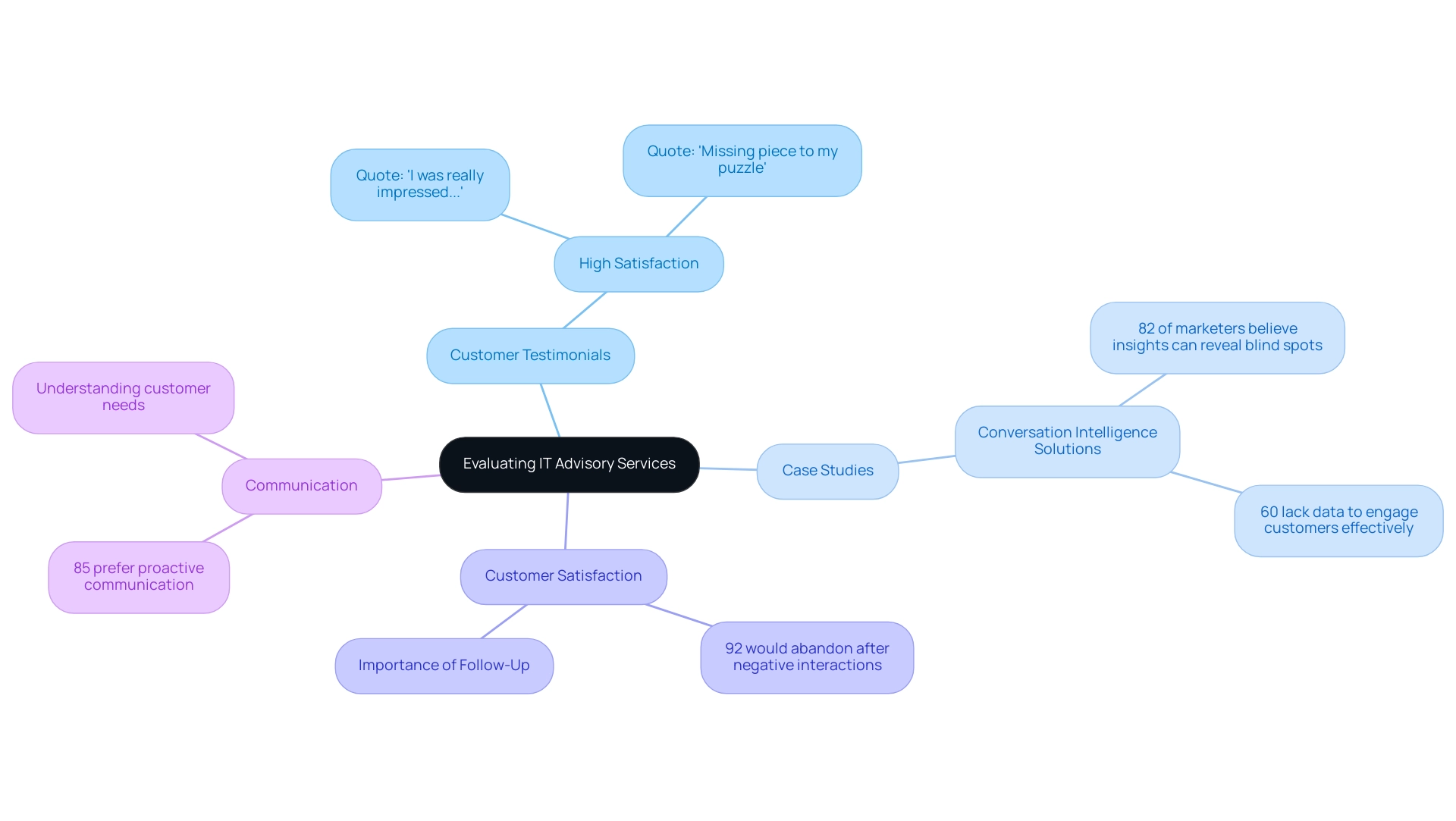
Establishing Communication and Collaboration Expectations
At the beginning of your involvement with a London IT consultancy, it is essential to create and record a clear interaction strategy for the duration of the assignment. This encompasses:
- Establishing the frequency and format of meetings
- Identifying preferred channels—such as email and management tools like Pumble, which provides secure, real-time interaction at no cost
- Designating key points of contact from both parties
Early definition of these expectations not only fosters transparency but also enhances collaboration, ensuring that all stakeholders remain aligned and informed as the initiative unfolds.
The effectiveness of interaction is underscored by the fact that approximately 93% of effective exchanges is nonverbal, illustrating the necessity of establishing a comprehensive interaction framework. Furthermore, on average, management software assists employees in saving 498 hours annually, emphasizing the efficiency achieved through effective interaction strategies. Additionally, with 87% of business analysts employing Agile approaches in their work, it becomes clear that integrating Agile methodologies into interaction strategies is essential.
As the project management sector is projected to experience significant growth, the demand for proficient communication strategies will only increase, making these practices essential for successful project outcomes.
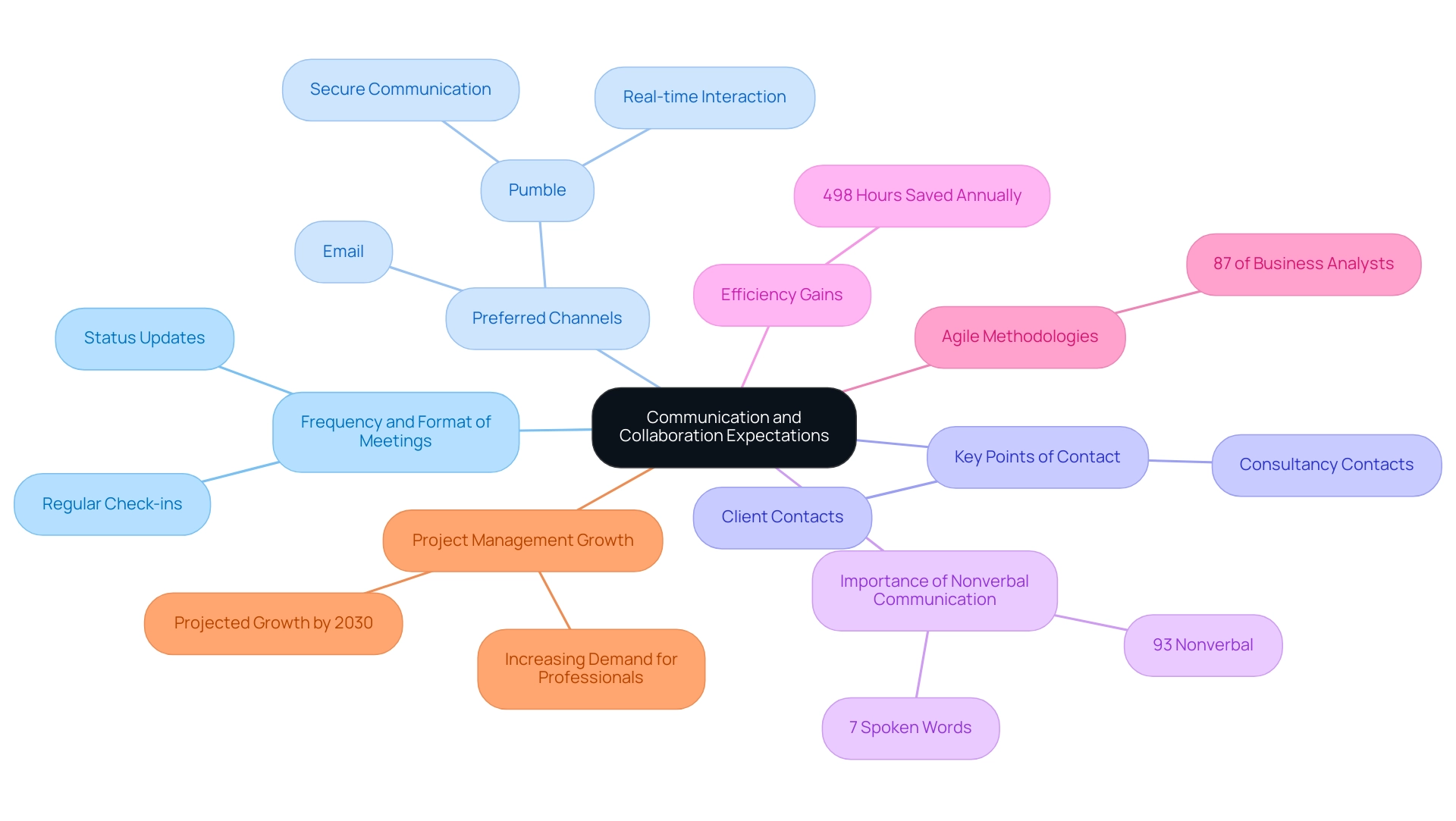
Conclusion
In the pursuit of aligning technology investments with business objectives, organizations must undertake a thorough assessment of their unique needs and capabilities. By initiating a comprehensive internal evaluation, businesses can identify specific challenges and goals that advanced technologies, such as generative AI, can help address. This foundational step not only clarifies the organization's vision but also prepares it for fruitful collaboration with IT consultancies that can provide the necessary expertise and support.
Evaluating potential IT consultancies is critical in this process. Organizations should meticulously research consultancy firms, examining their track records, methodologies, and client testimonials. The insights gained from past projects and client feedback will inform decision-making, ensuring that the selected partner can effectively navigate the complexities of digital transformation. As the IT consulting market continues to grow, the right partnership becomes increasingly vital for maintaining a competitive edge.
Understanding a consultancy's approaches and methodologies is equally important. Engaging in discussions about their project management strategies, particularly regarding Agile frameworks, can reveal how well they can adapt to the specific needs of the organization. Furthermore, establishing clear communication and collaboration expectations from the outset will foster a productive working relationship, ultimately leading to successful project outcomes.
In summary, organizations must take deliberate steps to evaluate their needs, research potential consultancies, and establish effective communication strategies. By doing so, they position themselves to harness the full potential of technology, driving innovation and operational efficiency in an ever-evolving digital landscape. Embracing these critical steps not only enhances the likelihood of successful technology implementations but also strengthens the organization's resilience in a competitive market.




